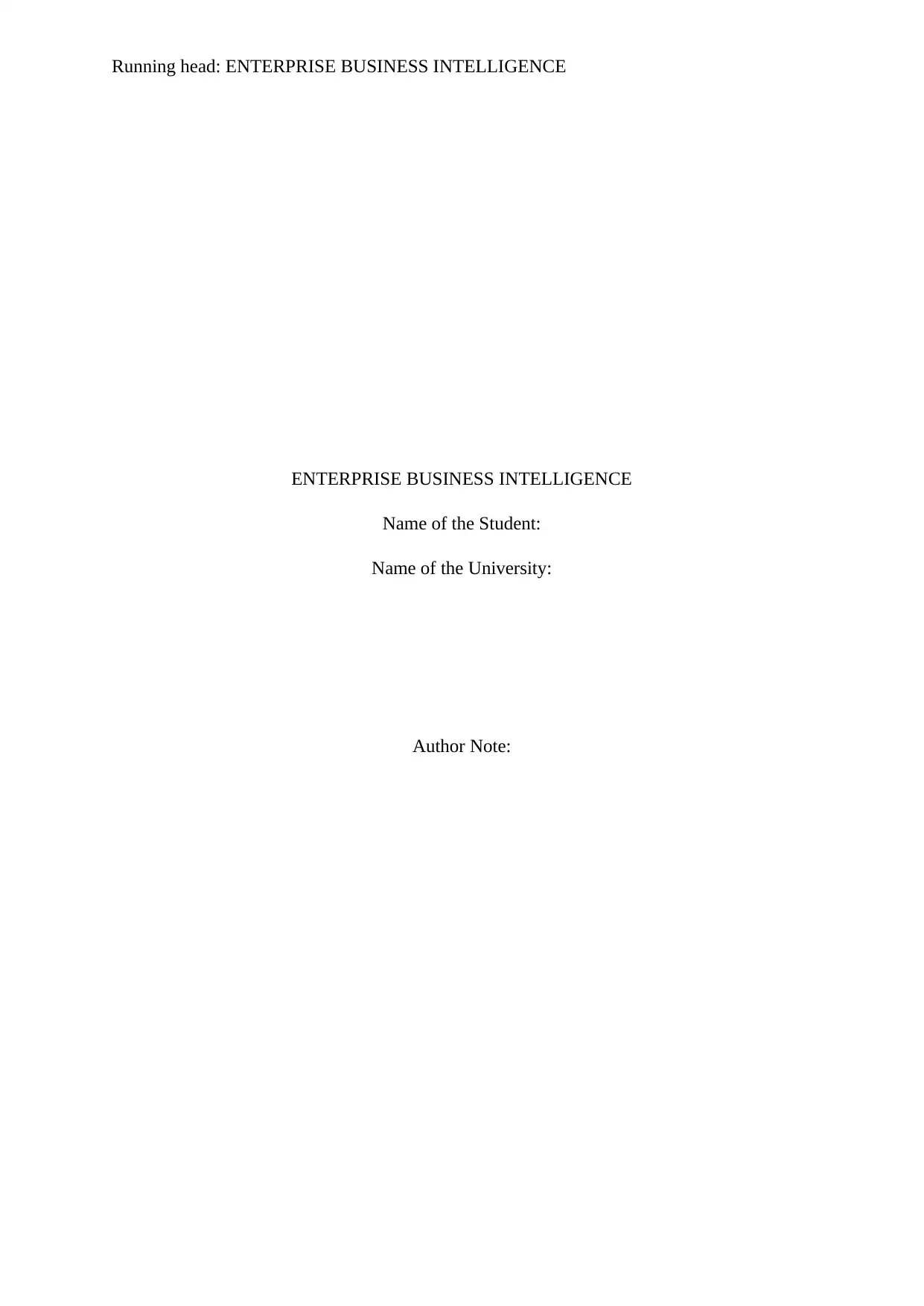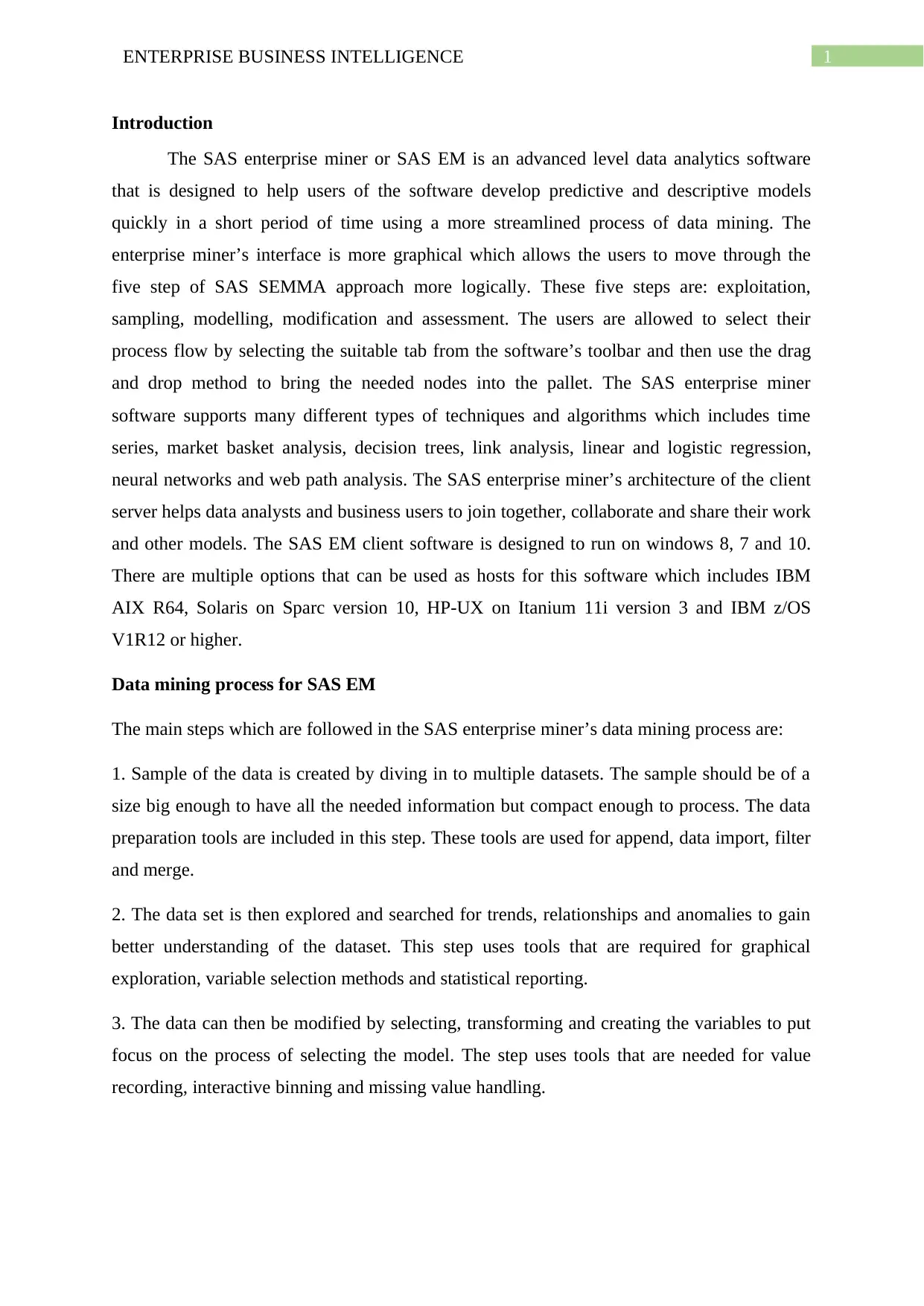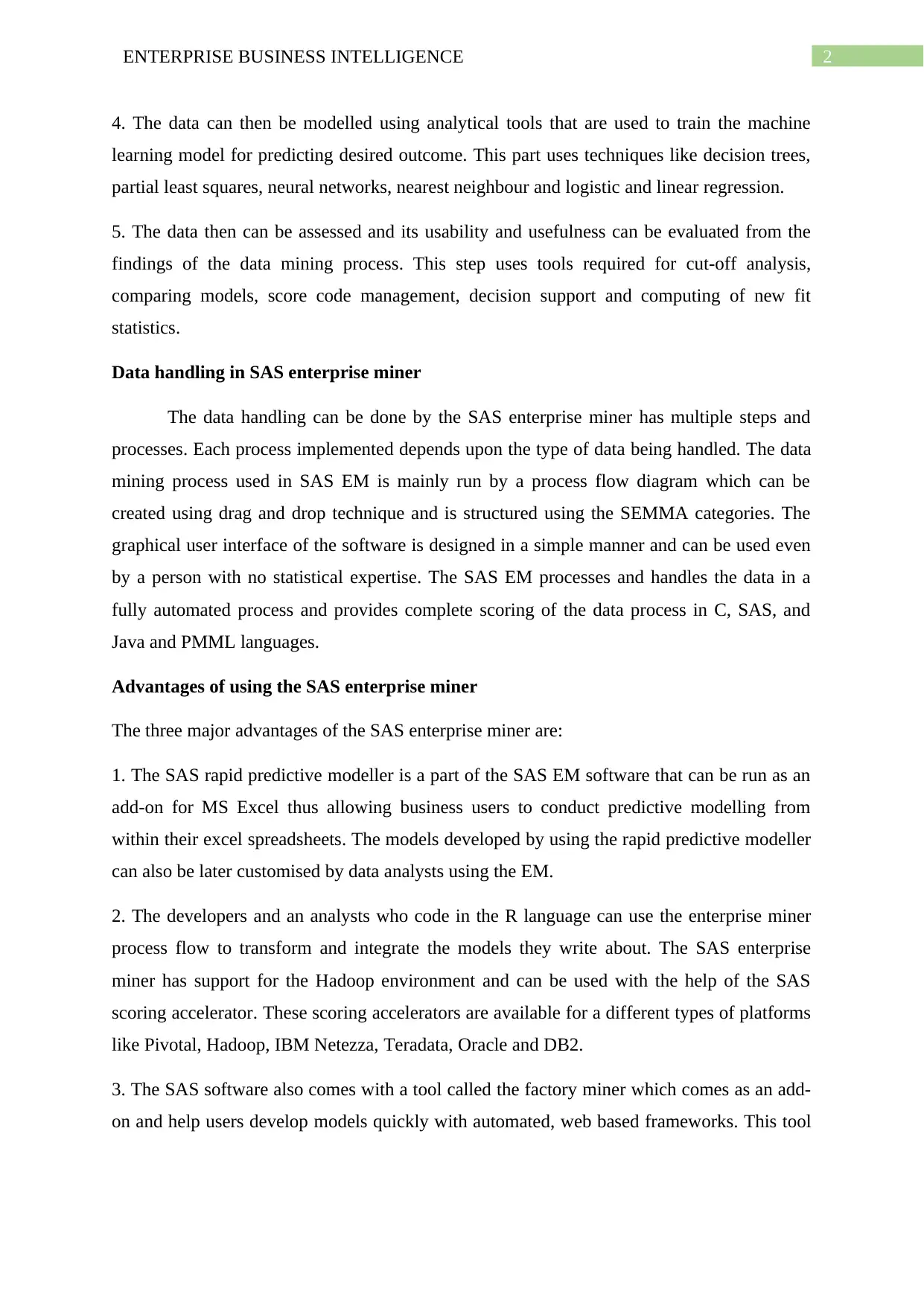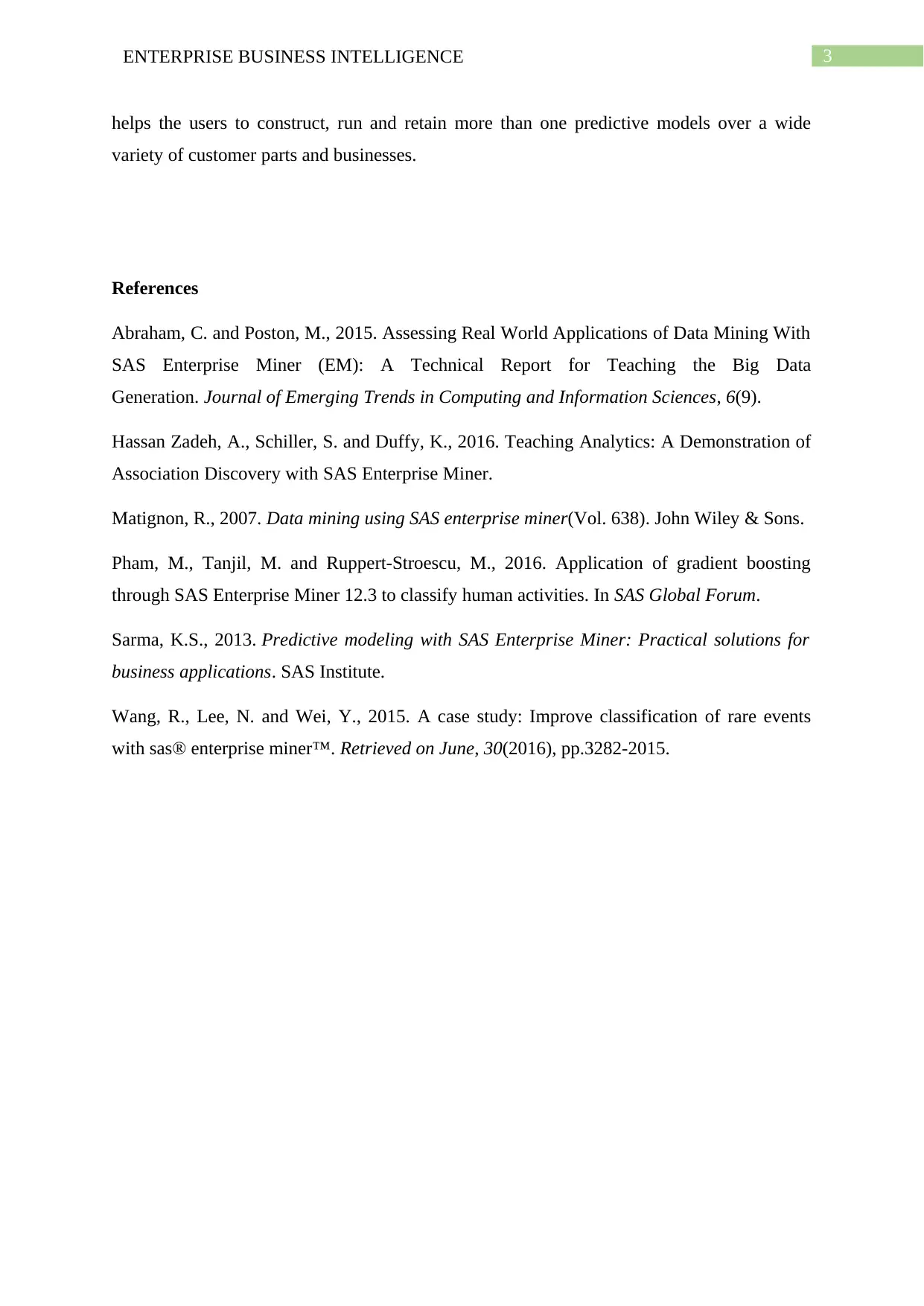Enterprise Business Intelligence
VerifiedAdded on 2023/03/30
|4
|942
|409
AI Summary
This document provides an introduction to SAS enterprise miner, its data mining process, data handling techniques, and advantages of using SAS enterprise miner for business intelligence. It covers topics such as the SAS enterprise miner's interface, data mining process steps, data handling methods, and the advantages of using SAS enterprise miner for predictive modeling and analytics. The document also includes references for further reading.
Contribute Materials
Your contribution can guide someone’s learning journey. Share your
documents today.
1 out of 4










![[object Object]](/_next/static/media/star-bottom.7253800d.svg)